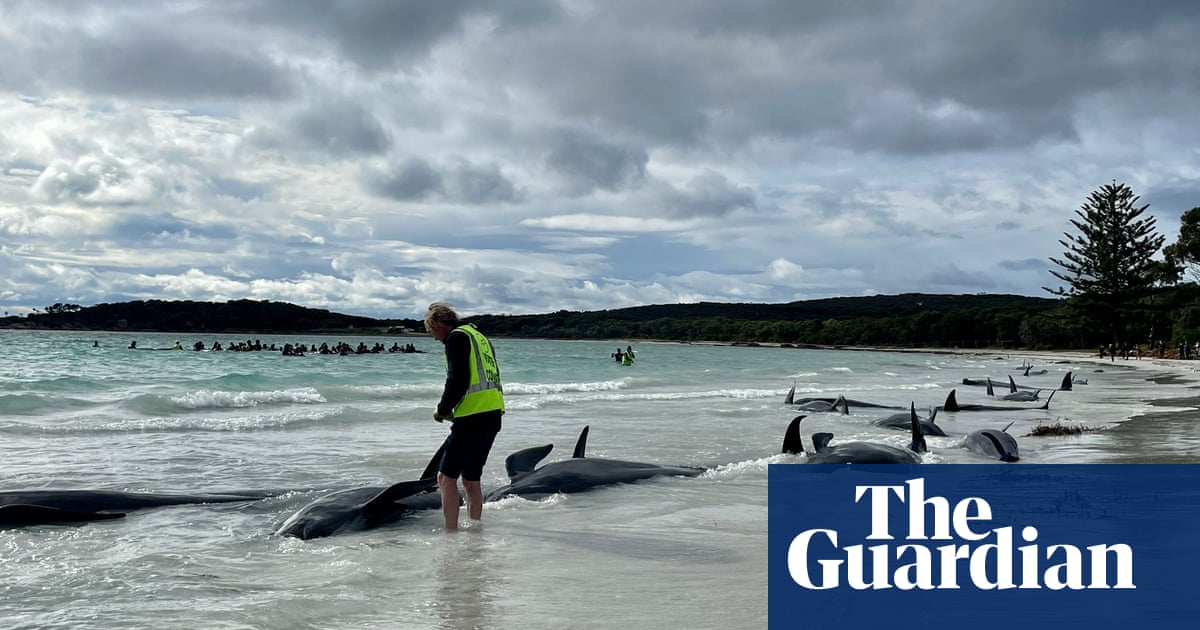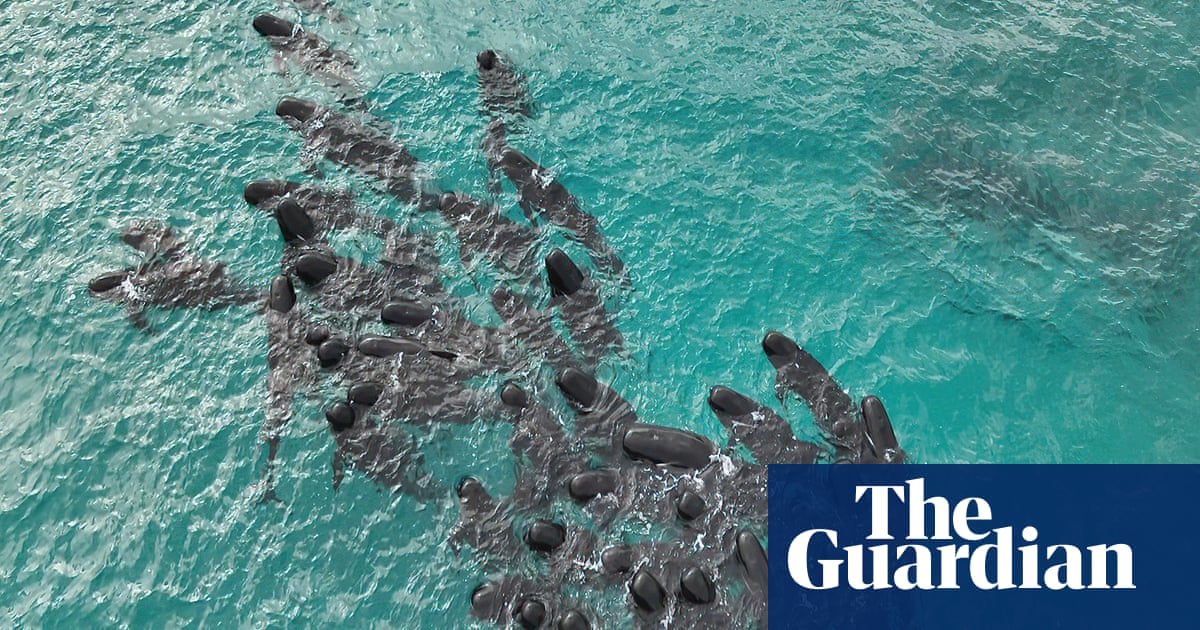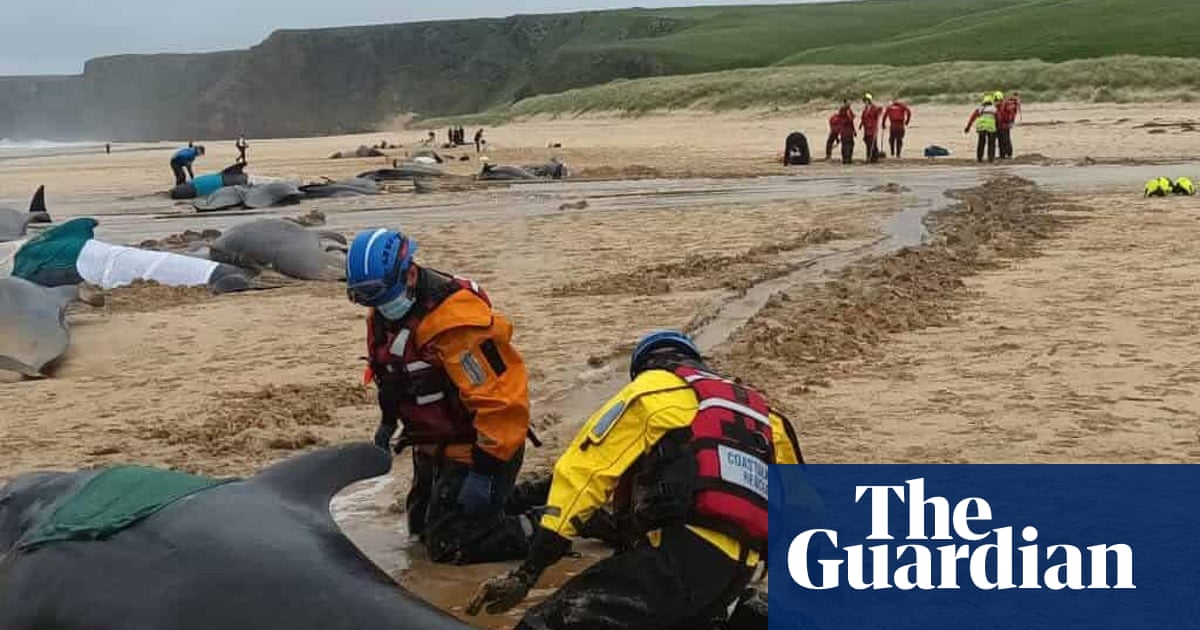
Officials are baffled by the remarkable behaviour of a large pod of pilot whales that grouped together in a heart shape before stranding themselves on a remote Western Australian beach.
Drone footage captured the moment the pod of almost 100 long-finned pilot whales moved tightly together before stranding themselves at Cheynes beach about 60km east of Albany on Tuesday evening.
By Wednesday morning, more than 50 whales lay dead on the shore, with volunteers, government workers and scientists fighting to save 46 more.
WA’s environment minister, Reece Whitby, said researchers from across Australia were baffled by the never-before-seen behaviour of the whales in the hours leading up to the stranding.
“Those images that we saw off the coast are unique,” Whitby said.
“It is pretty incredible from a scientific basis in terms of learning about strandings. Department of Biodiversity Conservation and Attractions [staff], when they saw those images, contacted their colleagues around Australia; they were in touch with other jurisdictions that have mass strandings. The feedback we were getting was we have never seen this before.”
After keeping vigil on the water’s edge overnight, a rescue operation began on Wednesday morning using slings to drag the pilot whales out to sea. They weigh about 1,000kg and are up to 4 metres long.
Sign up for Guardian Australia’s free morning and afternoon email newsletters for your daily news roundup
More than 70 volunteers and 90 staff from multiple government agencies were on the beach, with dozens of people taking turns to support the whales – many were rolling and unable to hold themselves up in the shallow water.
An effort to herd some of the pilot whales back out to deeper water on Wednesday afternoon was unsuccessful, with the cetaceans again beaching themselves.
People dragged the rebeached pilot whales onto the sand where a team of six veterinarians from Perth zoo and Albany worked to assess them. Animal welfare, rather than rescue, was the new priority.
Volunteers carted buckets of water to pour over the stricken pilot whales.
Earlier, a tractor was used to cart dead pilot whales on to the dry sand, where researchers began taking blubber and teeth samples to try and understand why the mammals beached.
Murdoch University marine biologist Dr Joshua Smith said pilot whales had a tightknit social network and stuck together when something went wrong.
DBCA environment officer Peter Harley said earlier on Wednesday the rescue would continue throughout the day until the living whales in the water were showing signs they could swim.
He said when the animals could lift themselves up, they would be corralled out to sea and away from the perils of a nearby rocky outcrop.
“What we will do this afternoon to try to guide the whales, is that we will be using vessels and we have some volunteers arriving with kayaks and we will gently coax them into the water and give them the best opportunity to survive,” Harley said before the pilot whales were stranded a second time.
“The worst-case scenario is that they turn around as they have done before and they head back to the beach and then we start all over again.”
Some volunteers were critical that the rescue effort did not start at daybreak but Whitby said the department had worked to save as many whales as possible while also protecting volunteers.
By 11am local time, the beach was lined with volunteers trying to warm themselves with hot-water bottles and tea after spending up to four hours in the chilly water.
Some were so attached to the pilot whales they had supported they found it heartbreaking to leave.
Local volunteer Kaysanne Knunckey said she was waist-deep in the ocean from 7.30am until after 11am – pulling the live mammals back into the water and supporting them with the help of a sling.
“It was freezing and hard to stand still just holding the whales,” Knuckey said. “The atmosphere was fairly positive and everyone is just trying to think of the bright side. It is just so heartbreaking that so many have beached themselves.”
Macquarie University wildlife scientist Dr Vanessa Pirotta said why whales stranded themselves remained a mystery.
“The fact they were in one area very huddled and doing really interesting behaviours and looking around at times suggests something else is going on that we just don’t know,” she said.
Analysing the footage, Pirotta said a whale may have been sick or the pod might have become disoriented, but it was unlikely they were trying to avoid predators.
More than 130 whales died in a mass stranding in Western Australia in early 2018 at Hamelin Bay south of Perth. The largest mass stranding of whales in WA happened in 1996 when 320 long-finned pilot whales stranded themselves in Dunsborough.












